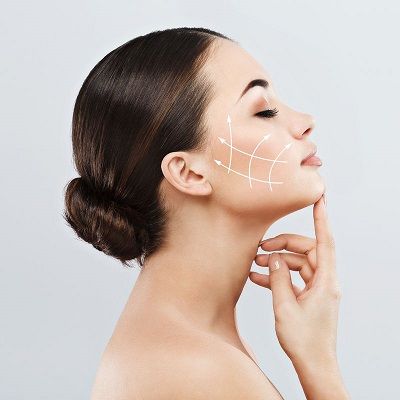
The upper jaw (maxilla) and lower jaw (mandible) are the two sections of your jaw (mandible). Children’s jaws might become misaligned, resulting in crooked teeth and a terrible bite.
If a child’s jaws are badly misplaced, orthognathic surgery, also known as Facial reconstruction surgery for the jaw in Dubai, may be required. In addition, children who need surgery frequently undergo orthodontic therapy (such as braces and headgear) both before and after the procedure.
Types of Jaw Surgery in Dubai:
Maxillary osteotomy:
The operation on your upper jaw is known as a maxillary osteotomy (maxilla).
The following conditions may necessitate a maxillary osteotomy:
- A substantially protruding or receding upper jaw.
- A wide bite occurs when your rear teeth (molars) do not contact you when you keep your mouth shut.
- A crossbite occurs when parts of your lower teeth protrude beyond your top teeth while your mouth is closed.
- Midface hypoplasia is a disorder in which growth in the center of your face is decreased.
Overview of the procedure:
During this treatment, your surgeon will:
- create an incision in the gums above your top teeth to provide access to the upper jaw bones
- Carved into the bone of the top jaw in a way that it can be moved as a single system
- Bring this part of your top jaw down, so it matches and aligns correctly with your lower teeth.
- Secure the corrected bone in its new location with plates or screws.
- Close the wound in your gums with stitches.
Mandibular osteotomy:
Mandibular osteotomy is a surgical procedure that is done on your lower jaw (mandible). It is often performed when your lower jaw protrudes or recedes considerably.
Overview of the procedure:
When you get a mandibular osteotomy, the doctor will do the following:
- Make a cut in your jaws on both sides of your lower jaw, right under your molars.
- cut the bottom jaw bone, allowing the surgeon to relocate it into a new position delicately
- Please change the location of the lower jawbone by moving it forward or backward.
- Install bars or bolts to keep the repositioned jawbone in place.
- Use stitches to seal the wounds in your jaws.
Bimaxillary osteotomy:
Bimaxillary osteotomy is a procedure that involves both the top and bottom jaws. If a problem affects both jaws, this procedure is used.
Overview of the procedure:
The methods employed for this operation comprise those outlined before for maxillary and mandibular osteotomies.
Although operating on both the top and bottom jaws can be difficult, your surgeon may employ 3-D modeling software to aid in planning the surgery.
Genioplasty:
Genioplasty refers to chin treatment. It can aid in the correction of a retreating chin. It is sometimes used with a mandibular osteotomy to treat a receding bottom jaw.
Overview of the procedure:
Throughout a genioplasty, the doctor will:
- Create a cut above your lower lip in your jaws.
- Cut a portion of the chin bone, allowing them to relocate it.
- Gently shift the chin bone into its new place.
- Insert tiny plates or bolts to assist the repositioned bone in the area.
- Use stitches to seal the wound.
TMJ treatment:
If alternative therapies have failed to relieve your TMJ problems, your doctor may consider TMJ surgery.
TMJ surgery is classified into several types:
- Arthrocentesis. Arthrocentesis is a relatively invasive technique that involves injecting liquid into the TMJ with tiny needles. This can help moisturize the joint and wipe away any leftover debris or inflammatory remnants.
- Arthroscopy. A small tube called a cannula is introduced into the bone throughout arthroscopy. The doctor then operates on the joint with a narrow scope (arthroscope) and tiny instruments.
- Open joint surgery: The most invasive kind of TMJ surgery is open joint surgery (arthrotomy). A cut is created next to the ear for this surgery. The afflicted TMJ parts can then be replaced or removed by your doctor.
What can I expect before and after surgery?
We’ll go through what to anticipate if you get jaw surgery down here.
Before surgery:
- In several situations, an orthodontist has fitted you with braces or Invisalign in the months leading up to your procedure. This aids in the alignment of your teeth in readiness for your operation.
- Before your operation, you’ll most probably attend a few consultations. These aid in the planning of your operation by your orthodontist and surgeon. Getting measurements, molds, or X-rays of your mouth can all be part of the preparation process.
- 3-D modeling on a laptop is also employed at times.
During the procedure:
- General anesthesia is used during jaw surgery. That implies you’ll be dozing off during the treatment.
- Most procedures take between 2 and 5 hours to complete; however, the actual duration varies depending on the technique.
- Most incisions done throughout jaw surgery are performed within your mouth, while minor cuts are made on the exterior in rare situations.
- Bruising on your cheeks or jaw is uncommon in general.
Recovery:
- After surgery, most individuals remain in the clinic for 1 to 4 days.
- When you are discharged from the hospital, your doctor will prescribe you food and dental care advice. During rehabilitation, it is critical to follow these guidelines carefully.
- It is typical to have edema, stiffness, and pain in your mouth and jaw after surgery. These must fade away with time.
- Recovery time might range between 6 and 12 weeks. After a few weeks of rest, your doctor will use braces to continue straightening your teeth.
- When your orthodontics are taken, your doctor will provide you with a retainer to help maintain your teeth in place.
What is the cost of jaw surgery?
Facial reconstruction surgery for the jaw in Dubai cost varies based on several factors. These are some examples:
- The surgeon.
- The surgery.
- Your area.
Also, keep in mind that the entire Facial reconstruction surgery for jaw in Dubai price involves several elements, including:
- The surgeon’s charge.
- Facility expenses.
- Anesthetic fees.
- Any further tests conducted.
- Any medicines provided.
When scheduling your jaw surgery, first check with your insurance company to see what is allowed. Many insurance providers may pay for jaw surgery to address a specific health issue or concern that has been established.
Takeaway!
Jaw surgery is commonly used to realign or correct the position of your jaw. It might affect either your upper or lower jaw or both.
There are several options for jaw surgery in Dubai. Your orthodontist and neurosurgeon will collaborate to devise a treatment strategy for your issue.
Although jaw surgery is usually considered safe, there are specific hazards involved. Before your operation, your doctor must inform you of these risks.
The jaw surgery cost might vary depending on numerous factors, including the doctor and kind of surgery. Before arranging any operation, always double-check what your insurance covers.











